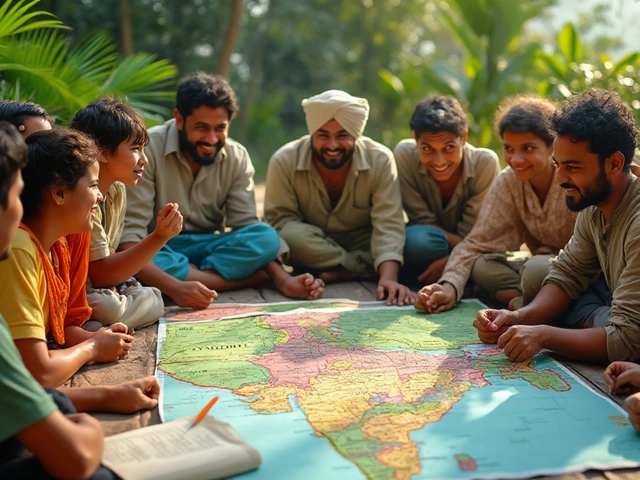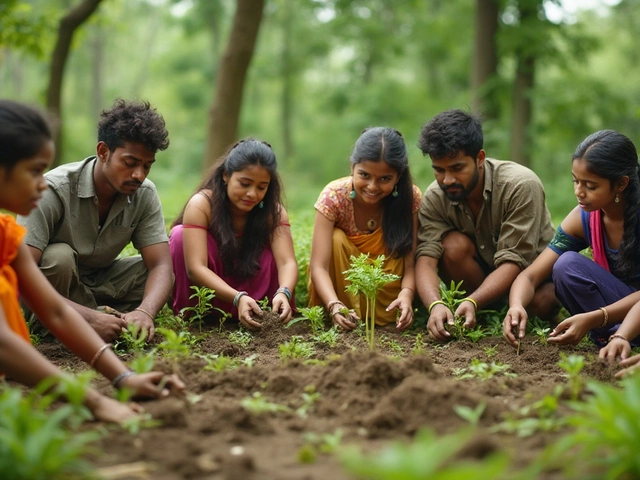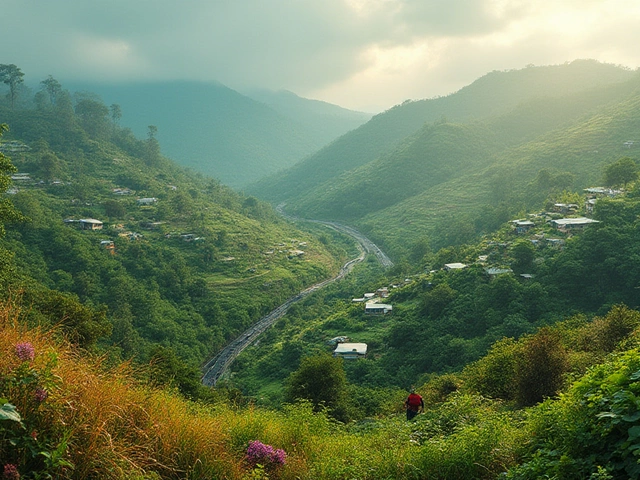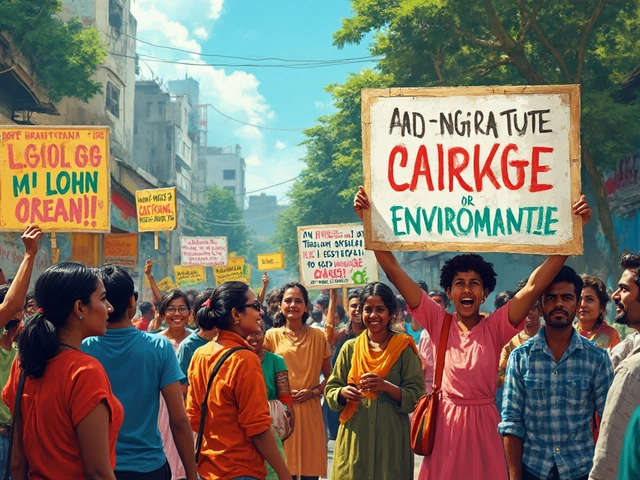When you hear 'environmental group,' do you picture a bunch of folks in tie-dye T-shirts chaining themselves to trees? Well, it's time to update that image. Today's environmental groups come in all shapes and sizes. They've got varied missions, visions, and ways of making a difference. Some focus on policy, others on direct action, and of course, some are all about saving those adorable animals.
Understanding the different types of environmental groups is kind of like knowing your coffee menu. You've got your espressos, cappuccinos, and flat whites—each unique, each with its crowd of fans. So if you're looking to get involved or just want to know who's doing what to save our planet, it's useful to know the main players in this green game.
- Grassroots Movements: Change from the Ground Up
- Conservation Organizations: Preserving Nature
- Policy and Advocacy Groups: Influencing Change Through Law
- Eco-Friendly Innovators: Pioneering Sustainable Solutions
Grassroots Movements: Change from the Ground Up
Grassroots movements are the lifeblood of environmental advocacy, engaging everyday people to tackle pressing issues right in their own backyards. Unlike larger organizations with hefty budgets, these movements often start small and grow through sheer passion and dedication, relying heavily on community involvement and volunteer energy.
A great example of this is the Sunrise Movement, an energetic youth-driven organization focused on stopping climate change and creating millions of good jobs in the process. They’re particularly known for their advocacy of the Green New Deal in the United States. Founders and members are typically local residents who feel the direct impacts of environmental challenges and decide to take action.
These groups are often nimble and responsive to local issues, stepping in where others might not. They focus on realistic, localized goals that individuals can see and participate in. Issues might range from cleaning up a nearby river to advocating against environmentally harmful local legislation.
Grassroots movements rely on certain strategies to build momentum:
- Raising Awareness: They educate their community on urgent environmental issues through workshops, meetings, and social media campaigns.
- Direct Action: Sometimes taking to the streets or organizing boycotts to draw attention to their causes.
- Networking: Building coalitions with other groups to amplify their voice and broaden their impact.
Suppose you're passionate about a specific environmental problem in your area. In that case, joining or starting a grassroots group might be the most effective way to make a difference. Not only do they offer a sense of camaraderie, but they also provide the tools to see real change unfold at the community level.
Conservation Organizations: Preserving Nature
Conservation organizations are like the guardian angels of our natural world. These groups focus on protecting and restoring wildlife and their habitats. You might have heard of big names like the World Wildlife Fund or The Nature Conservancy. They work globally to protect endangered species and vast landscapes. But there are also smaller, local groups doing crucial work right in your backyard.
Think of these groups as the frontline workers in the battle to preserve nature. They're out there conducting research, buying land for reserves, and even going to court to fight for the legal protection of ecosystems. Their work matters because it ensures the survival of the biodiversity that keeps our planet ticking.
To give you an idea of their impact, in 2023, The Nature Conservancy reported having protected over 125 million acres of land and thousands of miles of rivers worldwide. That's a staggering amount! These organizations do more than just plant trees or save tigers. They're involved in restoring coral reefs, cleaning up oceans, and reintroducing species back into their native habitats.
- Some conservation groups work to raise awareness. They'll hold community events or partner with schools to educate the next generation on why conservation is crucial.
- Others might operate more like silent protectors, acquiring land to prevent it from being developed.
- Then you have those involved heavily in policy, lobbying for stronger environmental protections and against harmful practices like deforestation and poaching.
Getting involved with a conservation organization doesn’t just mean donating money. Volunteers play a big role, whether it's planting trees, counting species, or simply spreading the word. If you're looking to pitch in, check out local conservation groups; they often need volunteers for events and activities.
In the digital age, even sharing their efforts online or signing petitions can amplify their message and impact. So, if you love nature and want to make sure it's around for the long haul, these organizations are a pretty good place to start.
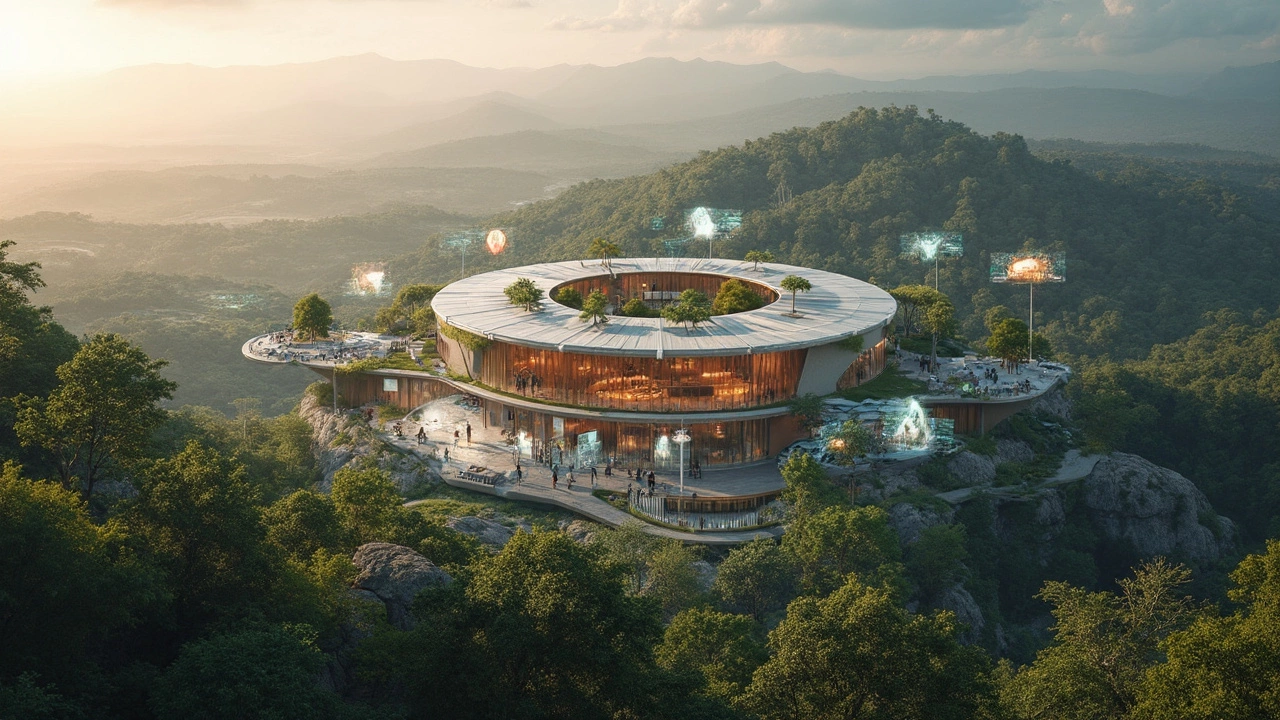
Policy and Advocacy Groups: Influencing Change Through Law
Stepping into the world of policy and advocacy groups feels like entering the bustling control room of environmental activism. These folks aren't just out there doing park clean-ups (though those are important too); they're knee-deep in legal texts, lobbying, and legislation. Think of them as the bridge between passionate grassroot campaigns and the corridors of power where decisions are made.
Organizations like the National Resources Defense Council (NRDC) or the Environmental Defense Fund (EDF) are great examples of these groups. They're not just ranting about carbon emissions; they're sitting at tables with lawmakers, armed with science and research, pushing for stronger environmental laws. From banning dangerous chemicals to advocating for renewable energy incentives, they've got a lot on their plate. If something environmental pops up in legislation, chances are they're already on it, making sure the planet gets its fair say.
One way these groups work their magic is through lobbying. But don't picture it as backroom deals. It's more about informed discussions where these orgs present data, research, and compelling arguments. And speaking of data, sometimes they hit the courts to prevent environmental disasters or push back against inadequate regulations. It’s like being in a courtroom drama, except the stakes are the health of our planet.
But how do they manage all this? It's a mix of strategies, from detailed reports to public petitions that can highlight urgent issues. It's like a well-orchestrated symphony of data, strategy, and public engagement. They engage citizens too because multiple voices can make change impossible to ignore. And with the climate challenge as urgent as ever, these groups are more vital than ever in keeping the pressure where it needs to be.
Eco-Friendly Innovators: Pioneering Sustainable Solutions
Ever think about the tech wizards who are swapping out fossil fuels for clean energy solutions? These eco-friendly innovators are out there dreaming up ways to make our lives greener without turning everything upside down. They're the folks who gave us solar panels, wind turbines, and electric cars.
Let's take a look at some cool stuff happening in this space. First up—solar energy. It's not new, but the technology is evolving fast. Did you know that Tesla launched solar roof tiles that don't even look like solar panels? They're sneaky little things that blend right in with traditional roofing, all while slashing your power bills.
Then there's the rise of bioplastics. Regular plastic is pretty terrible for the environment, taking forever to break down. But companies are making bioplastics from natural materials like cornstarch, which decompose much faster. Could you imagine a world where plastic doesn't last longer than a human lifespan?
Speaking of game-changers, how about those plant-based burgers that taste like the real thing? Brands like Beyond Meat are crafting fake meats that could help reduce the greenhouse gases beef production churns out. It's a juicy way to tackle climate change without giving up your favorite foods.
Let's not forget about smart cities. These are urban areas that integrate technology to enhance efficiency and improve the environment. They use things like sensors to manage traffic flow, waste collection, and even lighting, leading to less pollution and better resource use.
We've got an innovation wave happening, and being part of it means staying informed and maybe giving these new develops a shot. Who knew saving the planet could be this exciting?


